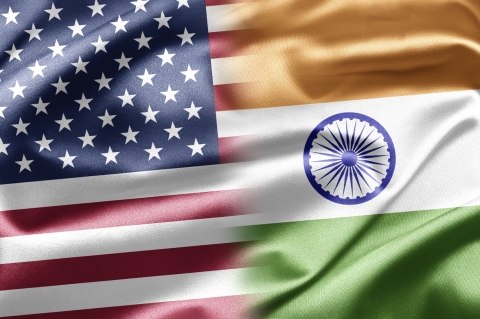The US and India Make AI Promises That Could Benefit Startups
Last week’s joint statement between the United States and India marking the occasion of Prime Minister Narendra Modi’s visit to the White House was packed with global security messaging. While joint commitments ranged from the strategic—such as a pledge to a ‘free, open, inclusive, and resilient Indo-Pacific region’—to the tactical—such as an agreement by the US to supply jet engines—what I am most interested in is a promise to collaborate on trustworthy AI to advance both silicon co-design and telecommunications networks.
Silicon Co-design
Any US-India dialogue that enhances global alignment on AI systems deployment is welcome, and the Semiconductor Supply Chain and Innovation Partnership MOU includes initiatives to bolster silicon co-design between the countries.
There is already a large silicon design and manufacturing relationship between the US and India. Many US chip designers including Intel, Nvidia, and Broadcom, already maintain offices in Indian cities such as Bangalore and Hyderabad. Much of the focus of these teams is on the so-called ‘physical design’ phase of chip architecture, which is the stage concerned with routing signals within the various metal layers that are masked into the silicon wafer.
For many years, routing complex signals across a chip, or today increasingly between multi-die chip packages, has been automated. AI and machine learning are transforming this space with even more intelligent management of thermal and signal integrity constraints. Accordingly, removing barriers to silicon co-design between the US and India will ultimately drive demand for design automation and computing infrastructure offered by companies like Rescale, one of SineWave’s portfolio companies.
Telecommunication Networks
The US-India joint statement also established two telecommunications-oriented task forces. The first is focused on the Open Radio Access Network (ORAN) initiative. This is a collaboration between operators including AT&T, NTT DOCOMO, Vodafone (plus India’s Bharti Airtel and Reliance Jho), and a diverse set of vendors like Dell, HP, ARM, and Intel, to create interoperable components for 5G – and ultimately 6G – systems.
While achieving the holy grail of inter-vendor interoperability is very hard to achieve in practice, the strategic interests of the US and India align here. The US lacks a competent 5G RAN system provider, and at the same time, India has one of the world’s largest cellular markets but no native 5G RAN system providers. Both nations have an interest in changing that status quo. At SineWave, we also believe that making 5G networks interoperable is not sufficient – they must also be easily accessible and controllable. This is where the work of the CAMARA project towards harmonized application programming interfaces (APIs) for 5G, and the 5G access and control platform being created by SineWave portfolio company Shabodi is so important.
Just when you might have thought ‘5’ was a sufficient number of ‘G’s,’ the race for competitive and geostrategic advantage means preparation for 6G is well underway. If the process is consistent with prior generations of cellular technology, we are now in the definition stage of 6G ‘AI native’ networks that will be deployed commercially around 2029-2030. The second task force deals with built-in AI methods and agents that could control everything in these networks from multi-antenna modulation and error correction to network flow prediction.
The joint US-India statement covered a lot of ground, but from a venture capital and enterprise technology perspective, the commitments provide exciting opportunities for startups who can pair these geopolitical priorities with the AI needed to control complex networks—all while maintaining explainability and most critically—security.






















